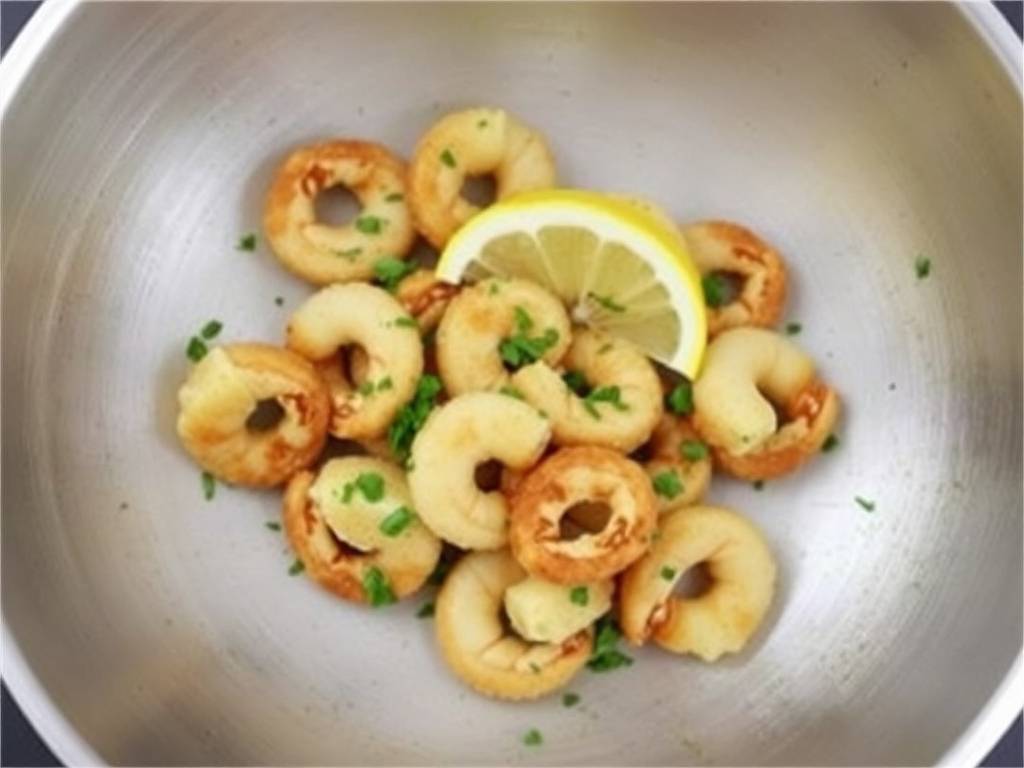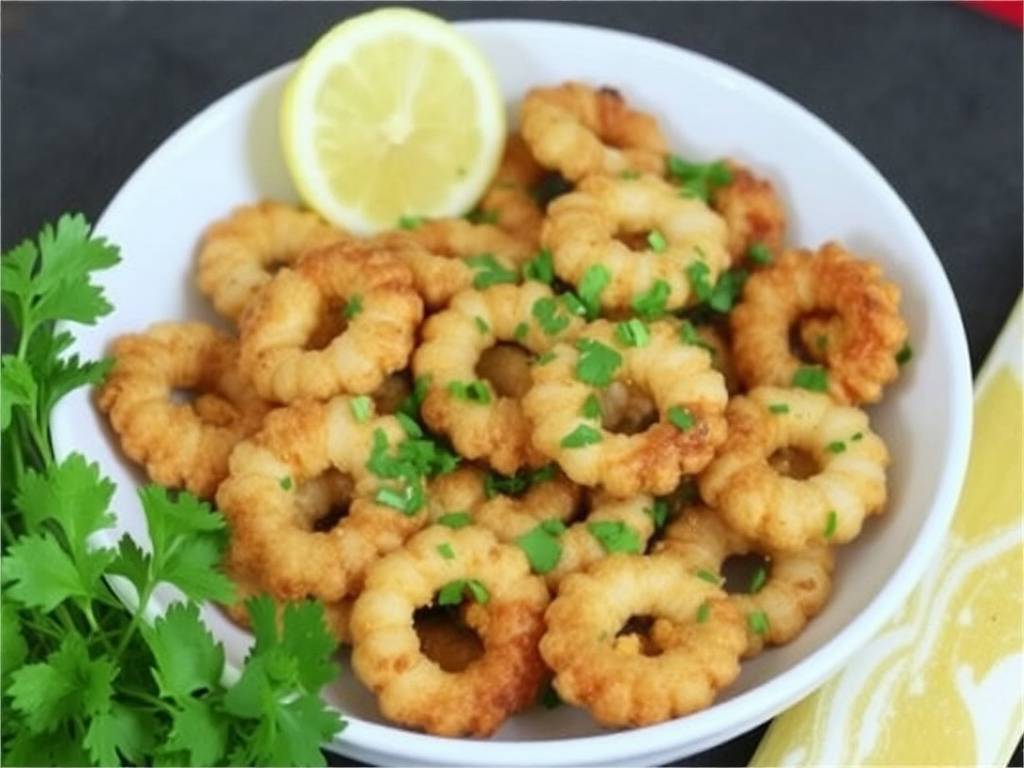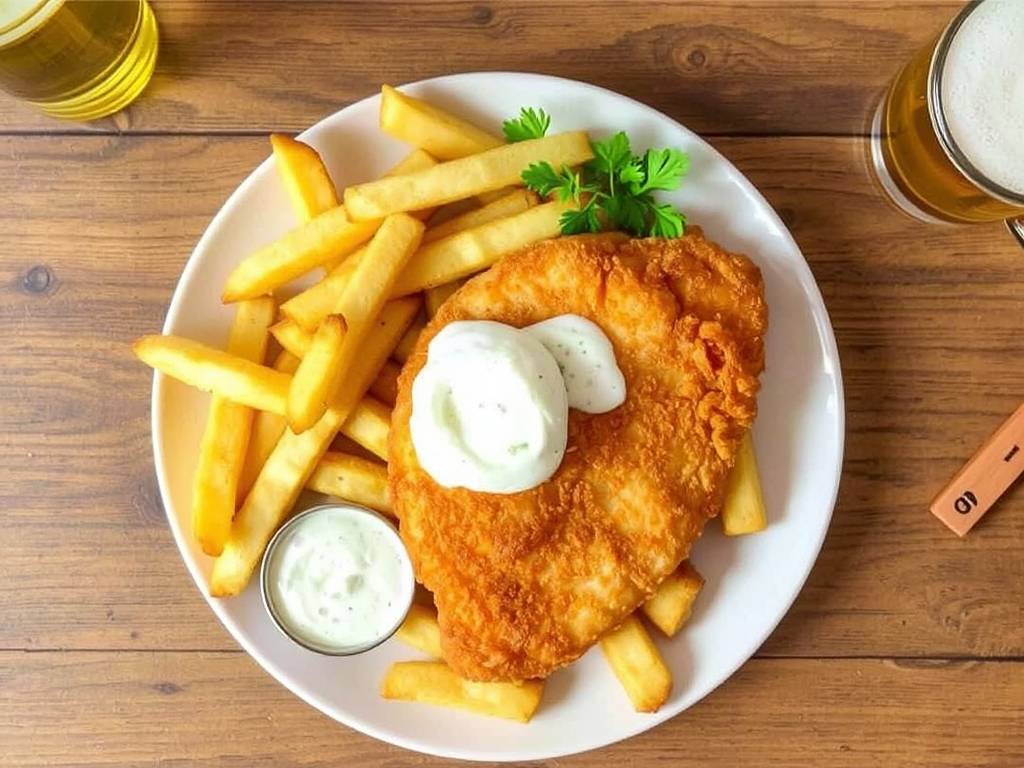Crispy Golden Rings: Your Ultimate Guide to Perfect Fried Calamari with Lemon and Parsley
There's something universally delightful about a plate of perfectly cooked fried calamari. That satisfying crunch giving way to tender, sweet seafood, all brightened up with a squeeze of fresh lemon and a sprinkle of vibrant parsley. It’s a classic appetizer that feels both celebratory and comforting. Yet, for many home cooks, the idea of making restaurant-quality fried calamari at home can be intimidating. Questions about achieving that light, crispy coating without greasiness, ensuring the squid is tender, and mastering the final flavorings often hold people back.
Well, I'm here to tell you that with a few simple techniques, you can create a fried calamari dish that will rival your favorite Italian eatery. This comprehensive guide will walk you through every single step, from selecting your squid to the final, beautiful presentation. We'll tackle common pitfalls like a soggy coating or rubbery texture head-on, ensuring your homemade fried calamari with fresh lemon and parsley is an absolute triumph.

Choosing Your Squid: The Foundation of Flavor
Let's start at the beginning: the star of the show. For the best fried calamari recipe, you want fresh or properly thawed frozen squid. Look for tubes and tentacles that have a clean, slightly sweet smell of the ocean. The flesh should be firm and glossy, not slimy or dull. While many grocery stores sell pre-cleaned squid, learning to clean it yourself is a valuable skill for any seafood lover.
If you're starting with whole squid, don't be daunted. To clean it, gently pull the head and tentacles away from the body. Remove the clear, plastic-like quill from inside the tube and rinse the tube thoroughly under cold water. Separate the tentacles from the head just below the eyes, saving the tentacles and discarding the head and innards. Peel off the thin, purplish skin from the tube—it should come off easily. Pat everything completely dry with paper towels. This step is crucial for our crispy fried seafood coating to adhere properly.
The Art of the Crispy Coating
This is where the magic happens. The secret to a light, non-greasy, and incredibly crispy coating lies not in a single ingredient, but in a method. We are going to use a double-dredging technique, which might sound fancy but is wonderfully simple.
You will need two shallow dishes. In the first, we'll create our seasoned flour mixture. Combine all-purpose flour with cornstarch—a 2:1 ratio is perfect. The cornstarch is a game-changer; it inhibits gluten development and promotes a shatteringly crisp texture that stays crisp longer. To this, add your seasonings. I recommend salt, freshly ground black pepper, a pinch of garlic powder, and a touch of paprika for both color and a subtle warmth. This is your base for the perfect crispy calamari coating.
In the second dish, you have a choice for your wet ingredient. The classic option is buttermilk. Its slight acidity helps tenderize the squid ever so slightly and allows the flour to cling beautifully. For a lighter alternative, you can use a simple mixture of beaten eggs with a splash of milk or even just club soda. The carbonation in club soda creates an ethereally light and airy crust.
The Frying Process: Hot Oil is Non-Negotiable
Now, for the most critical step in achieving golden brown fried calamari: the oil temperature. If your oil isn't hot enough, the calamari will absorb oil and become greasy. If it's too hot, the coating will burn before the squid cooks through. You need a reliable deep-fry thermometer for this. Aim for a steady 375°F (190°C). Use a neutral, high-smoke-point oil like vegetable, canola, or peanut oil.
Fill your heavy-bottomed pot or Dutch oven with enough oil to submerge the calamari, but never more than halfway up the pot to prevent dangerous overflows. While the oil heats, start coating your squid. Working in small batches is the golden rule of frying. Take a handful of the dried squid, dip it into the wet mixture, let the excess drip off, then toss it in the seasoned flour mixture until thoroughly coated. Shake off any excess flour.

Gently lower the coated squid into the hot oil. Don't drop it, as that can cause the oil to splatter. You should see an immediate, vigorous bubbling around the squid. Fry for only 1.5 to 2 minutes, until the coating is a pale golden color. The squid cooks incredibly fast, and overcooking is what leads to a rubbery, chewy texture. Use a slotted spoon or a spider strainer to remove the first batch, letting the excess oil drip back into the pot, and place them on a wire rack set over a baking sheet. This setup is far superior to paper towels, as it allows air to circulate, preventing the bottom from getting steamy and soft.
Let the oil come back up to 375°F before adding the next batch. Repeat until all the squid is cooked. Now, for the pro-move that guarantees maximum crispiness: the double-fry. Once all the calamari has had its first fry, bring the oil temperature back up to 375°F. Working in one larger batch this time, carefully return all the par-fried calamari to the hot oil for a second fry, which will only take about 30-60 seconds. This second fry drives out any residual moisture locked in the coating, resulting in an unbelievably crunchy texture that will stay crisp until the very last bite.
The Finishing Touches: Lemon and Parsley Are More Than Garnish
Your calamari is now perfectly cooked and crispy, but we're not done yet. The final seasoning and garnishing are what elevate this dish from great to sublime. Transfer your hot, double-fried calamari to a large, clean bowl. Immediately season them with a good flaky sea salt while they are still piping hot—the salt will stick to the oily surface.
Next, take a generous handful of fresh, flat-leaf parsley, finely chopped. Sprinkle it over the hot calamari. The heat will wilt the parsley just enough to release its beautiful, fresh aroma and flavor, infusing the entire dish. Finally, serve with fresh lemon wedges on the side. Do not squeeze the lemon over the entire batch in the kitchen! The acid will begin to soften the crispy coating. Let your guests do the honors at the table, ensuring everyone gets that perfect, bright, and zesty bite.
Serving Suggestions and Dipping Sauces
This easy lemon parsley fried squid is fantastic on its own, but it also pairs wonderfully with a variety of dipping sauces. A classic marinara sauce is always a winner. For a creamy, tangy option, try a simple aioli (garlic mayonnaise) or a remoulade. If you love a bit of heat, a spicy chipotle mayo or a Calabrian chili paste mixed with a little olive oil would be divine.
Serve your calamari immediately. It's the ultimate shareable appetizer for a gathering, a fantastic Friday night treat, or the centerpiece of a seafood feast. Pair it with a crisp, cold white wine or a light lager beer.
You have now mastered the art of making the best homemade fried calamari. From selecting and cleaning the squid to the double-fry technique and the essential lemon and parsley finish, you are equipped with all the knowledge to create a truly spectacular dish. So, heat that oil, slice those lemons, and get ready for the most delicious, crispy, and tender fried calamari you've ever made. Happy cooking






发表评论